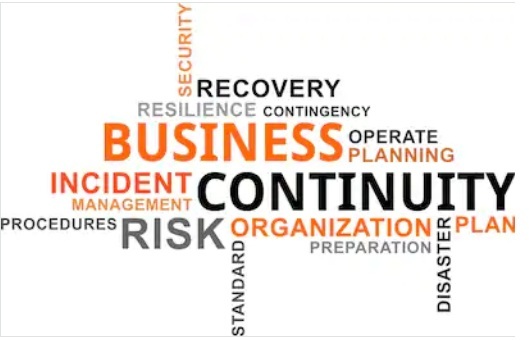The interruption of business continuity represents one of the worst problems that a company or, more generally, any organization may encounter. It is calculated that every year at least 20% of the business realities must face this problem which can derive from various causes.
Regardless of the triggering factor, on a practical level, the interruption of operations translates into one word: disservice . But it doesn’t end there. Starting from each disservice, further trouble for the company is generated, that is, the loss of customers and turnover. A bitter bite, difficult to swallow.
As analysts pointed out, it is clear that most organizations, regardless of their public or private nature, are destined to have serious problems if they do not implement correct Business Continuity policies . Fortunately, the current market offers very valid solutions to deal resolutely with the interruption of business continuity. You just need to know them.
Article summary:
- Business Continuity Management: guarantee it with virtualization
- What is Business Continuity
- Business Continuity Plan and crisis scenarios
- Inaccessibility to information systems
- Unavailability of the rooms
- Inaccessibility to documentation
- Solutions for Business Continuity: Disaster Recovery
- What is virtualization
- Virtualization and Disaster Recovery
- The benefits of virtualization
- UAE Technician : solutions for Business Continuity
What is Business Continuity
 The Business Continuity or operational continuity is the management capacity of an organization which allows it to become more resilient in the moments in which occurs a critical, from which it can potentially derive power outage of a service and / or a produced or, in the worst of circumstances, a threat to the survival of reality itself.
The Business Continuity or operational continuity is the management capacity of an organization which allows it to become more resilient in the moments in which occurs a critical, from which it can potentially derive power outage of a service and / or a produced or, in the worst of circumstances, a threat to the survival of reality itself.
A correct Business Continuity procedure therefore represents a crucial aspect which contributes significantly to the improvement of the organization’s activity, allowing it to react promptly to the occurrence of any critical event.
But what are the possible crisis scenarios ? And, above all, what solutions should be adopted to implement a business continuity plan capable of providing an effective response to emergencies, restoring activities as quickly as possible?
Business Continuity Plan and crisis scenarios
The Business Continuity Plan or Business Continuity Plan aims to define:
- The alert methods in emergency situations;
- The types of response to the disastrous event ;
- The methods of communication to all parties involved;
- The whole set of procedures aimed at dealing with the accident.
The plan is designed for any type of organization, be it public, private or non-profit, in order to increase its resilience .
The hypotheses of criticality can be different and obviously vary according to the type of activity carried out by the organization. For this reason, for each reality it is appropriate to draw up multiple business continuity plans, according to the possible crisis scenarios that may occur.
However, certain types of scenarios are transversal. That is, they can manifest themselves in any type of organization, regardless of its nature. Let’s analyze some of the most significant critical issues that unite the various organizational realities.
Inaccessibility to information systems
This specific crisis scenario occurs when an event causes an interruption in the infrastructures or in the application components of an information system . The consequence is an inaccessibility to the services provided by the system itself.
Unavailability of the rooms
This criticality occurs when an event determines an interruption in accessibility to the environments in which specific services are provided, thus making it impossible to use them. The unavailability may also concern access to data stored in environments which, in the worst case scenario, may be destroyed. This can for example occur following an extreme event such as a fire, an earthquake or a flood, causing huge losses to the organization.
Inaccessibility to documentation
This crisis scenario occurs when an event renders unavailable access to the documentation necessary to carry out a service or to continue production. The scenario may also concern the inaccessibility of personal data.
Solutions for Business Continuity: Disaster Recovery
We have examined only three of the many possible crisis scenarios that may take place. The list is potentially huge. But beyond the single critical issues that, as we have already said, vary from organization to organization, the thing that we want to highlight is the profound damage that an interruption of business continuity can cause in a reality, be it public or private.
Consider, for example, how much the loss of sensitive data can weigh on a company’s reputation . Or again how many problems can cause inoperativeness in institutions or public administrations, on whose functioning the supply of essential services for citizens and businesses depends. How to intervene then?
One of the most important activities planned to deal with critical events, ensuring correct management of Business Continuity, is Disaster Recovery . Although we often hear about Disaster Recovery compared to IT infrastructure , this type of activity can affect different sectors of the organization. In our case, we will focus attention on the IT field.
At the IT level, the term “Disaster Recovery” refers to all technological, logistical and organizational measures aimed at restoring systems, infrastructures and data, in order to ensure correct delivery of services, in the face of a critical event that has impaired regular operation.
The most current IT tools offer very effective support in the Disaster Recovery process. Especially virtualization , the technology that forms the basis for ensuring the protection and continuity of services and processes (See also: ” How to notice and protect yourself from ransomware, the ransom malware “).
What is virtualization
The virtualization is a technology that allows you to create for IT services a simulated computing environment, or precisely “virtual”, instead of a physical environment. A classic example of virtualization is the so-called virtual machine . It is a real virtual computer that behaves with the user in the same way as a physical computer, equipped with an operating system and hardware.
Virtualization and Disaster Recovery
Virtualization is able to improve Disaster Recovery both in terms of simplifying procedures and in terms of economic savings. Let’s dig into the substance. Among the many disastrous events that can be produced in the IT sector, the following can be listed as examples:
- The unusability of a server
- The inaccessibility to a site
- Corruption of system files
The breaking of one or more disks which causes data loss.
In all these scenarios and in many others, being able to take advantage of a virtual environment can make the difference to ensure the operational continuity of the organization. The typical example is the Cloud . Through Disaster Recovery as a Service any company, organization or association can carve out a virtually reserved space within a Cloud environment provided by a provider.
In this specific environment, the organization can replicate applications and data of its infrastructure, thus being able to quickly restore them in the event of an interruption of business continuity, following crisis scenarios such as human errors, hacker attacks , sabotage or damage electrical systems that cause the primary data center to break .
Thanks to virtualization systems , work and normal service delivery can therefore resume immediately, without causing dangerous losses.
The benefits of virtualization
The adoption of virtual machines offers a series of undeniable advantages in the development of a Disaster Recovery plan :
- It requires low costs compared to traditional approaches
- It ensures very fast recovery times , significantly limiting the disservice
- Allows you to test the real efficiency of the recovery plan before any criticality occurs
- It is a hardware independent solution on which it runs. In the event that there is a hardware failure, it is therefore possible to run the virtual machine on another physical machine, without the need for the latter to have the same characteristics as the original one.
We are faced with an important series of benefits to be taken into account if we want to ensure proper management of Business Continuity.
UAE Technician : Solutions for Business Continuity
If you are about to implement a meticulous Business Continuity policy, you can contact UAE Technician . We are a reality specialized in Office Automation and Information Technology that provides countless solutions to companies, including an innovative virtualization service aimed at Business Continuity.
For any information or for a no-obligation quote, contact us or come to visit us at our operational headquarters in Dubai , in the province of UAE

